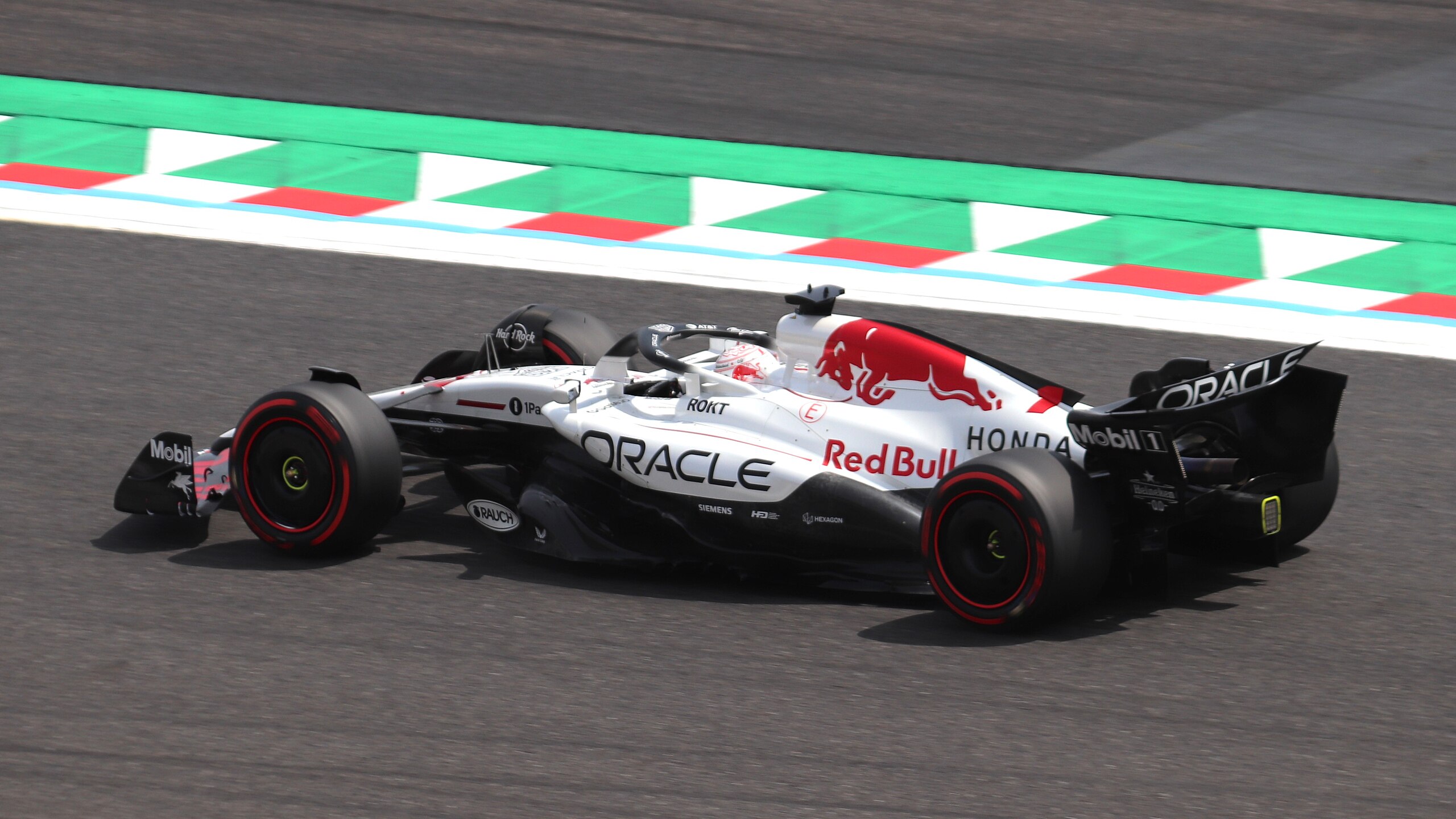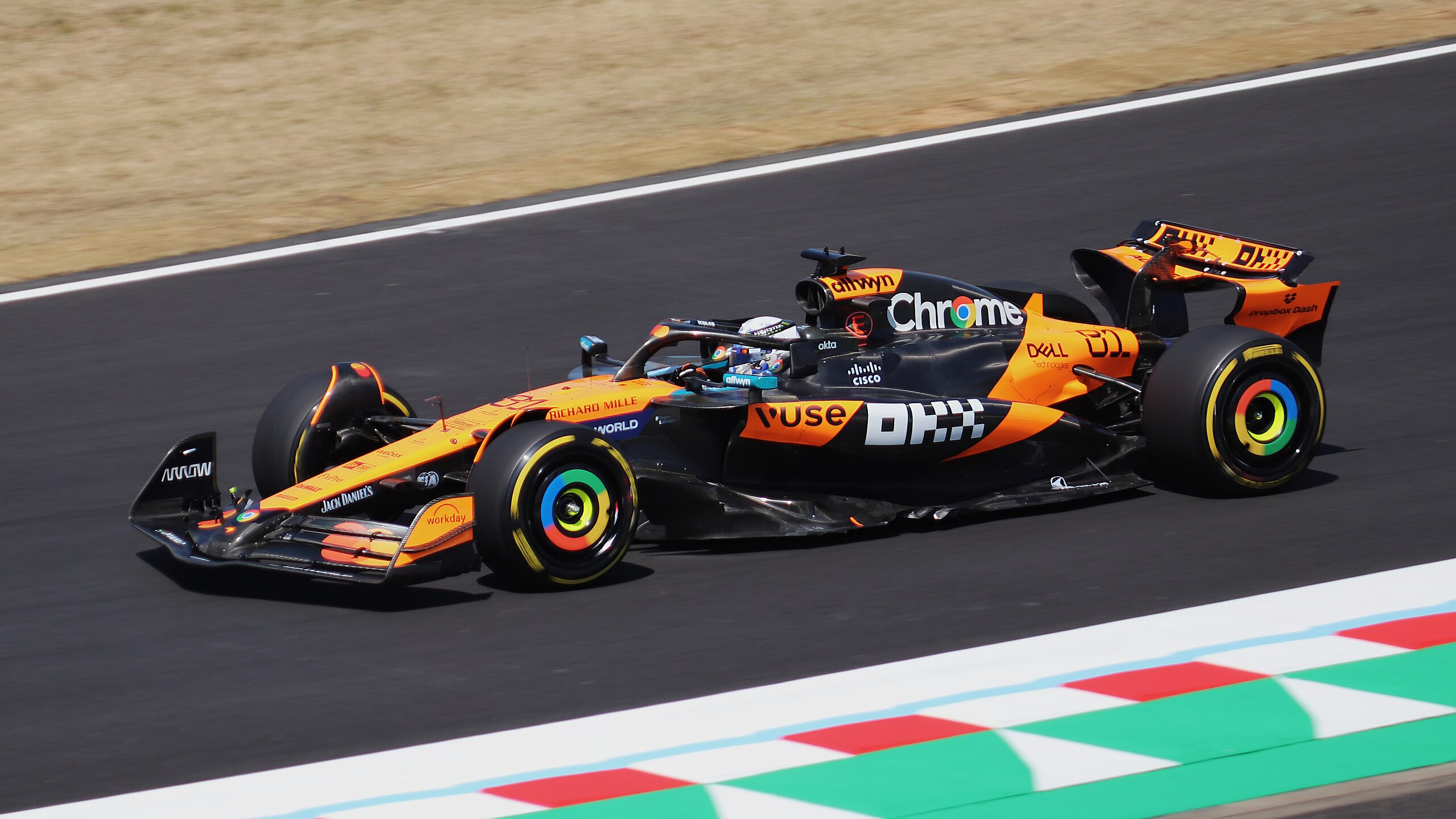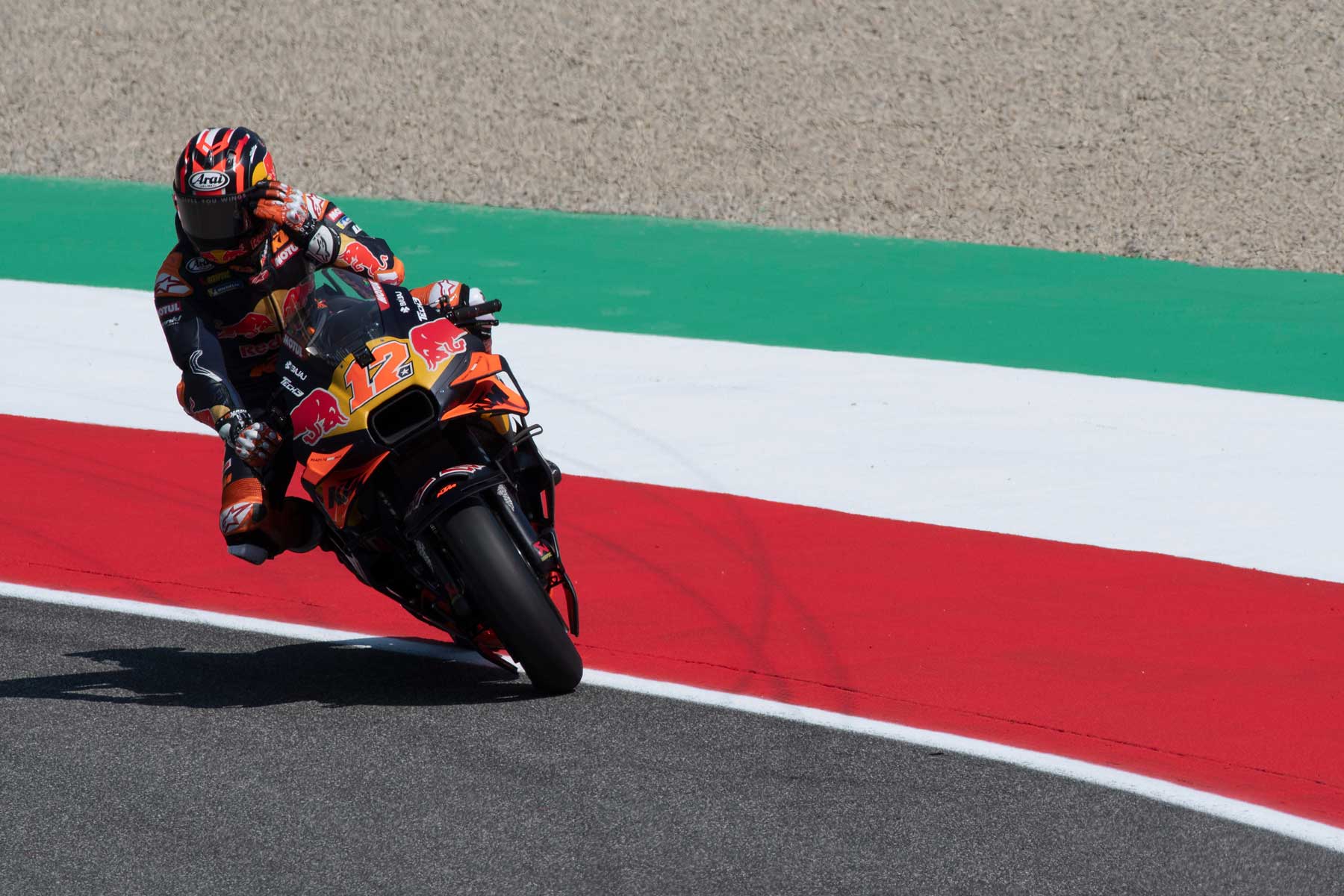Are you willing to sponsor?
Are you ready to explore the transformative power of athlete sponsorship for your brand? Click here to learn more about how sponsorship can help brands grow and thrive in the exciting world of motorsports.
By Emanuele Venturoli| Posted October 14, 2018 | In Bikes, MotoGP, Motor Racing, Motorsports, Sports Marketing
In some ways, we could call the victory of Ana Carrasco in the 2018 Supersport 300 Championship a revolutionary one. As the first time a woman has won an official two-wheel international championship, it’s doubtlessly a historic event – both for women in motorsports and motorcycling in general.
Proof of this comes not only in the huge amount of media coverage given to the news but also the fact that, at the Thailand MotoGP Grand Prix press conference, the theme of women in motorsport was widely discussed by both riders and other industry professionals.
Born in 1997, 21-year-old Carrasco is obviously not the first woman to compete on two wheels in the traditionally male world of motor racing. She isn’t even the first to win a speed race on the circuit or even the first to win a world title under the aegis of the FIM – the Finnish Kirsi Kainulainen did it in 2016, in the sidecar championship.
However, Carrasco is the first woman to win an international motorcycle championship – in an impervious and difficult class.
Her result, though, did not surprise either fans or insiders. That Carrasco had a strong future has been well known since her eighth-place win in the Moto3 GP in Valencia in 2013 – although the past years of Moto3 probably did not show her true potential.
Her recent results may have been less than satisfactory, and alongside her team’s financial difficulties and various injuries, she has not always appeared hugely competitive.
At this point the eternal question rears its head again: can women in motorsport be competitive at the very top levels?
To answer this question we could easily dwell on tired reasoning, that is risky and has already repeatedly addressed. The spectrum of questions is wide, starting with the difference in physical performance between men and women and ending with inevitable and annoying theories about machismo – and so on.
Instead, it is up to those who work within the field of sports sponsorship to investigate the relationship between women and motorsport in the broadest sense and see how this area of the sport can be utilized into positive action for brands.
Looking at the official statistics of the MotoGP World Championship, it turns out that the female audience affects a large part of Grand Prix audiences, both at home and on the track.
According to CSM International GMBH & Nielsen Sports, out of every ten spectators in the top two-wheeler series three are women. These are interesting figures, especially when the very large scale of the MotoGP audience is considered. The championship has more than 2.6 million people registering at circuits every year, meaning more than 800,000 girls and women have seen a live Grand Prix in the past nine months.
It is evident, and important, that the success of women in motorsports is closely linked to the popularity of the sport amongst women watching the races. The more often bikes are ridden by women, the more women will watch and be thrilled by the sport – and in turn, the more women will lead as protagonists in motorsport in the years to come.
Unfortunately, there are relatively few market statistics that tell us about the female impact of motorsports – but those that do exist are encouraging. According to a survey conducted by the Motorcycle Industry Council (MIC) in 2015, in America 14% of motorcycle owners are women, and that number more than doubled in the preceding decade.
There is also an interesting finding about the average age of a woman driving – women are often about 15 years younger than their male colleagues: 35 against 49.
This evidently speaks of an evolving market and of a growing passion, which is emerging both in the young and the very young. The reasons for this very welcome trend are to be found in society and in the breaking down of gender norms, but also in the inclusive development of certain manufacturers. Some areas of the motorcycle industry have, for some time, taken more inclusive paths towards the women’s market, especially in terms of marketing – finally clearing the image of the badly behaved, dirty motorcyclist and replacing it with something altogether more positive.
Production has improved too – the Ducati Scrambler Sixty2, the Triumph Bonneville T100, the HD Sportster 883, the Moto Guzzi V7 and the Yamaha MT-07 have more than one eye on female consumers and have as a result seen great success.
How can all of this seek to involve the whole motorsports industry, from racing to the road market? How can the success of Carrasco and the rise of the women’s motorcycle market be linked?
Perhaps it can be suggested that the bike – a holistic system – must become as inclusive within the market as possible, leaving behind a history that has often meant stereotypes and rooted, bogus prejudices. Widened participation for the entire two-wheeler industry would hold incalculable opportunities. It is not irrelevant to remember that a huge amount of marketing, sponsorship and communication directors of big, international companies are women – and that it is necessary to have the right tools at hand if you want to communicate effectively with these decision-makers and with the public of consumers.
In short, the victory of Ana Carrasco is an incredibly important one – but above all is a significant cultural indicator of the direction the entire two-wheel movement is taking. It is, without a doubt, good news for everyone.
If you would like to talk about women and motorsport you can contact us at info@rtrsports.com
Are you ready to explore the transformative power of athlete sponsorship for your brand? Click here to learn more about how sponsorship can help brands grow and thrive in the exciting world of motorsports.

A graduate in Public, Social and Political Communication from the University of Bologna, he has always been passionate about marketing, design and sport.
The online platform where you can discover the latest trends, strategies and insights from the exciting world of sports marketing.
View our blog
May 15, 2016
Honda Racing Corporation is pleased to announce the renewal of its contract with Dani Pedrosa for an additional two years. Both parties are pleased to reach the agreement ahead of this weeken[...]
Read More
January 26, 2016
Today Movistar Yamaha MotoGP’s Valentino Rossi was honoured for his major achievements as the face of Grand Prix racing during his appearance as a special guest of [...]
Read More
January 17, 2016
Today the Movistar Yamaha MotoGP Team has lifted the suspense for racing fans the world over waiting for the kick off of the 2016 season. The Italian-based team gathered in Barcelona today t[...]
Read MoreIn an era where it is possible to get anywhere with a click, there is a strong temptation to approach teams and properties directly for sponsorship projects.
By doing so, we are convinced that we are shortening the value chain, saving time and money. However, these DYI methods are anything but risk-free and what initially appears to be a competitive advantage soon turns into a problem that is difficult to resolve. That’s why there are agencies. And this is why you should rely on us for your sponsorships.
When first approaching a sponsorship or sports marketing project, it is difficult to know immediately which stakeholders are correct, what the decision flow is, and what the right timelines are for each process. Sports is a very specialized field of action, and fitting effectively into its paths can take a lot of time and therefore money. We, on the other hand, know referents and spheres of action and know who to talk to, when and how. So you are also more effective.
Sports is an immense passion, and for our heart colors we would be willing to do anything. But business is a different business, and it is important to make the best possible strategic decisions based on independent research, statistics and reliable data. A sports marketing and sports sponsorship agency like RTR has an objective, 360-degree picture of the scenario and can tell you what is really best for you: which sport, which athlete, which team. This is because we possess a great deal of data and information on ratings, segmentation and attitudes. Because the numbers don’t lie. Never.
Activations are the real heart of sports sponsorship. Without them, there remains only a blank sticker on a motorcycle, car or uniform and no contact with the public, no emotional connection, no impact on the bottom line. Then how do you do it? It certainly won’t be the teams or the athletes who will help you leverage sponsorship and enjoy the many marketing rights you have paid for. To bring out the best in a sports marketing project you need an agency that knows how to use sponsorship to engage the fanbase on the Web, to reach out to Shopping Centers, to organize hospitality, to develop B2B and B2C opportunities, and to get “your” athletes in front of millions of potential consumers.
Would you ever go to the dealer who sold you the car and ask if the competitor’s car is better? No, of course. So, how do you expect to get firm measurements of the effectiveness of your sponsorship if you do not rely on someone super partes? At RTR, we have always worked with independent third-party agencies that allow us to know the return on any exposure of your brand on TV and in the media. In addition, we believe in calculating ROI as the ultimate measure of your success-so we can tell you for every penny you spend how much you are making.
We have been involved in sports sponsorship and sports marketing for more than 15 years. We are consultants in the sense that our goal is to maximize your investment, but we are also an agency that manages the project from start to finish. We have been doing this since 1995 with passion and professionalism, following three principles that have become cornerstones of our business: independence, verticality and transparency.
I would like to highlight the fact that one of the qualities of RTR is its great ability to approach the sponsorship scenario strategically, together with its passionate attitude, its amazing enthusiasm for solving problems, and its high level of professionalism.
Gianluca Degliesposti
Executive Director Server&Storage EMEA
Eurosport is truly delighted with its business relationship with Riccardo Tafà, who has become extremely popular, thanks to his detailed knowledge of the sports marketing sector and his highly diligent attitude to work.
Francois Ribeiro
Commercial Director
Passion and Expertise are the features that I have found in RTR since the very beginning. Serious and reliable professionals but also very helpful, nice and open-mind people, willing to listen and compare different ideas. All the values in which RTR believes make this agency a partner, not just a supplier, a partner with whom we have had the opportunity to achieve significant commercial results in term of success and image.
Luca Pacitto
Head of Communication
We have been working with RTR Sports Marketing for over 10 years. The objectives and the programmes of collaboration continue to be renewed and to grow with mutual satisfaction. I believe RTR is a team of great professionals led by Riccardo Tafà, who I consider a manager of exceptional skills and with a great passion for his work.
Lucio Cecchinello
Team Principal
I have known and worked with Riccardo Tafà since 1995 when we collaborated for the first time on a project for the Williams Formula 1 team. Several clients followed. After leaving Williams to work for Gerhard Berger then owner of the Toro Rosso F1 Team, I turned again to Riccardo to seek his help in finding a tool supplier for the team and Riccardo duly obliged with an introduction to USAG, a partnership with Toro Rosso which endured for five years. I recently started a new role as Group Commercial Director for the renowned Andretti Autosport organisation and I find myself working with Riccardo once again on a number of interesting projects. Why has this relationship with Riccardo endured ? He’s smart, knows the commercial side of sport inside out and back to front and he’s honest and trustworthy. Riccardo Tafà is a “doer” not a “talker”: in over 20 years I have never had a dispute either with him or with a company that he has introduced and each partnership introduced by Riccardo has delivered quantifiable ROI to rights holder and sponsor alike. I can think of no better testimonial of Riccardo’s diligence, knowledge, contact base and hard work than that.
Jim Wright
Group Commercial Director
The online platform where you can discover the latest trends, strategies and insights from the exciting world of sports marketing.
View our blog
July 4, 2025
When, in 1950, the Formula 1 kicked off at Silverstone, no one could have predicted that, 75 years later, it would become much more than a sport. Today, F1 is a global phenomenon, a cultural,[...]
Read More
July 1, 2025
In the complex and exciting world of Formula 1, performance no longer belongs exclusively to wind tunnels and race strategies. It also unfolds in boardrooms, brand labs, and experiential mark[...]
Read More
June 26, 2025
The European Commission has provided Liberty Media Corporation with unconditional approval to complete the acquisition of the MotoGP World Championship. The process of annexing the top motorc[...]
Read More